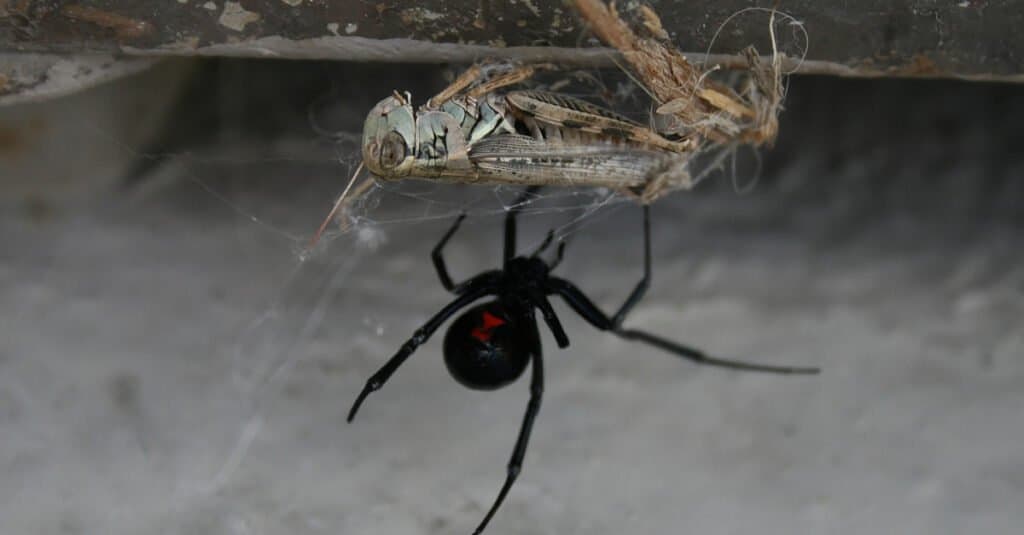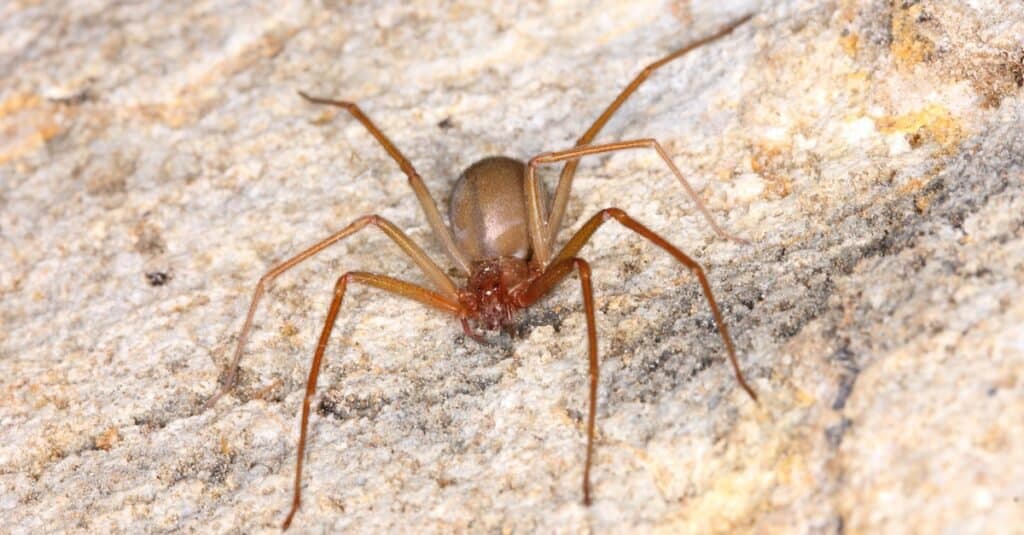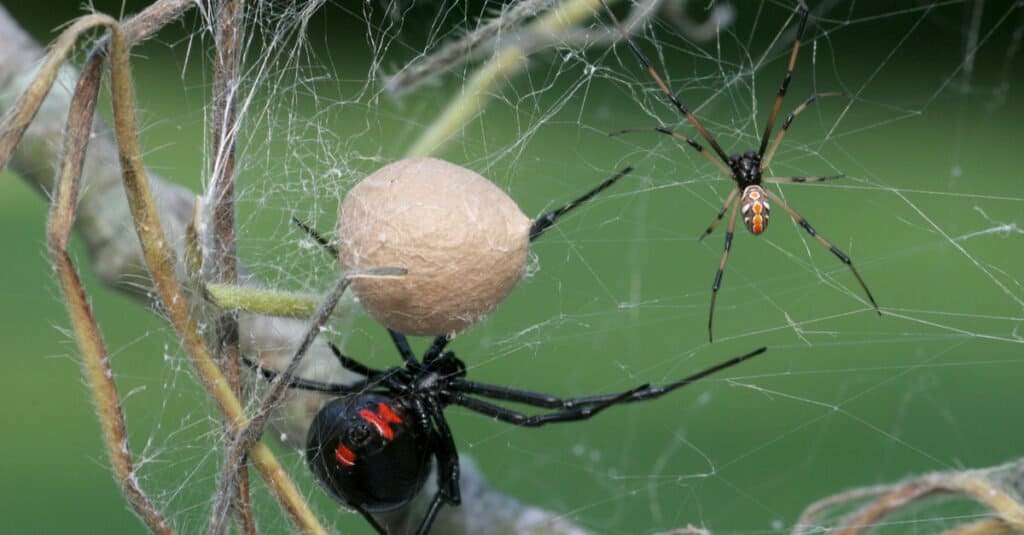In Ohio, there are hundreds of species of spiders, but only a small selection of them are venomous to humans. Nearly every spider you come across produces venom, and it is a common characteristic among species, just like the silk they produce. The fangs attached to a spider’s chelicerae are how they inject venom into their target.
This article will cover everything you need to know about the venomous spiders in Ohio. Luckily, most spiders in Ohio are harmless. Only a few species are dangerous to humans, unless allergic.
What Venomous Spiders Live In Ohio?
Ohio has 4 species of venomous spiders living in the state:
- Southern Black Widow (Latrodectus mactans)
- Northern Black Widow (Latrodectus variolus)
- Brown Recluse (Loxosceles reclusea)
- Mediterranean Recluse (Loxosceles rufescens)
These spiders have much more potent venom than other spiders, but deaths from them are still rare. Other spiders like jumping spiders and orb weavers also have venom, but their bite has no significant medical effects on humans. Unless allergic, most spiders have harmless bites.
Difference Between Recluse and Widow Spider Venom

Black widows have neurotoxic venom, which is more common amongst spiders.
©Crystal Kirk/Shutterstock.com
The black widow and brown recluse are the most venomous spiders in Ohio. While both spiders have strong venom, bites from them have different effects. The brown recluse’s venom is necrotic. Necrotic venom is a common trait in spiders found in the Sicariidae family. The necrotic venom of the brown recluse damages the area it bites, causing the death of tissue, swelling, redness, ulcers, fever, and possible amputation.
Black widows have neurotoxic venom, which is more common amongst spiders. Their venom attacks the nervous system. The bite symptoms vary depending on the person and the amount of venom injected. Common black widow bite symptoms include abdominal pain, nausea, cramping, and body pain. Death from black widow bites is still rare due to the current anti-venom available, but their bites are still dangerous.
Recluse Spiders

Recluse spiders are nocturnal and wander around for food at night.
©Pong Wira/Shutterstock.com
The two species of recluse spiders that live in Ohio are the brown recluse and Mediterranean recluse, both equally venomous. These spiders have a body length of around 7 mm (0.25 inches) and a leg span capable of reaching an inch long. The violin-shaped marking on the back of the cephalothorax is this species’ most identifiable trait. The Mediterranean recluse has a violin-shaped mark, but it is much fainter than the brown recluse. The Mediterranean recluse is also not native to Ohio but is originally from the Meditteranean region in south Asia.
Recluse spiders are nocturnal and wander around for food at night. In Ohio, they mainly inhabit the southwestern region of the state. They prefer to hide in dark areas with moisture. Woodpiles, cardboard, attics, basements, and caves are common areas to find them.
While their venom is dangerous to humans, they mainly use it to feed on insects like roaches and silverfish. During the day, recluse spiders hide in a dark silken retreat. Spring to fall is when these spiders are active, sometimes seen indoors hunting for food.
Black Widows

Black widows are nocturnal and create messy webs to live in.
©Mark_Kostich/Shutterstock.com
The black widow is considered one of the most dangerous spiders in the US, and it is also the most venomous spider in Ohio. Its venom is said to be a lot stronger than a rattlesnake‘s, but because of its size, venom is only administered in small amounts.
In Ohio, there are two species of black widows which are northern and southern black widows. Northern black widow females are dark, and their hourglass marking is broken. Southern black widows look similar, having a bulbous abdomen and a complete solid hourglass marking on the bottom of their abdomen. Male black widows are around half the size of females and are known for being eaten by the female after mating. Cannibalism when mating is common in spiders, but widow spiders are named after this trait.
Black widows are active in the warm months of summer and fall. They are nocturnal and create messy webs to live in. Black widows have poor vision and rely on the vibrations in their web to navigate. Secluded areas like under wood piles, outdoor furniture, corners, basements, bushes, and cluttered areas are where these spiders build their messy webs.
Northern and southern black widow spiders are very similar, but the southern species have slightly stronger venom. When threatened or in danger, the black widow is prone to bite but will not do so if unprovoked. Latrodectism is the term used that describes the sickness following a widow spider bite.
Symptoms of Latrodectism include:
- Vomiting
- Sweating
- Muscle pains
- Spams
- Redness
- Swelling
- Stomach pain
Since anti-venom exists, deaths from black widows are almost non-existent, but bites are still painful.
The photo featured at the top of this post is © iStock.com/AmericanWildlife
Thank you for reading! Have some feedback for us? Contact the AZ Animals editorial team.






